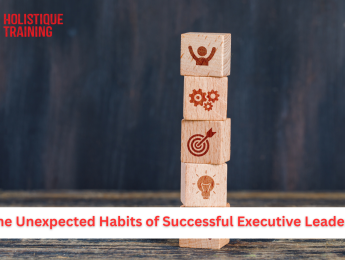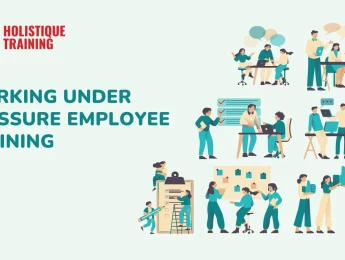Introduction
Imagine a corporate world that thrives on adaptability, embraces change as an opportunity, and navigates uncertainties with ease. Such a world exists, and at its core lies the art of dynamic decision-making. In the face of rapid technological advancements, shifting market dynamics, and global disruptions, the ability to make informed choices in real-time has become the cornerstone of corporate excellence. In this blog post, we embark on a journey to uncover the power of dynamic decision-making, understanding its significance in shaping the destiny of organisations, exploring the essential steps that drive effective decision-making, identifying best practices for implementation, and reflecting upon the transformative evolution of corporate decision-making over time.
What Is Dynamic Decision-Making in the Corporate World?
Dynamic decision-making refers to the ability of individuals and organisations to make timely, informed, and adaptable choices in response to evolving circumstances. Unlike traditional decision-making, which often follows a linear and rigid approach, dynamic decision-making involves embracing uncertainty, complexity, and the need for flexibility. It requires a proactive mindset that values agility, continuous learning, and the ability to adjust strategies as new information emerges.
Table 1: Comparative overview of traditional vs. dynamic decision-making
Aspect | Traditional Decision-Making | Dynamic Decision-Making |
Approach | Linear and Rigid | Flexible and Adaptive |
Response to Change | Resistant and Reactive | Proactive and Responsive |
Decision Speed | Slow and Deliberate | Fast and Informed |
Data Utilisation | Limited | Leveraged for Insights and Informed Choices |
Stakeholder Involvement | Limited to Top Executives | Involves Employees at Various Levels and Departments |
Why Is Dynamic Decision-Making Important?
In the contemporary corporate landscape, where change is not just constant but often exponential, dynamic decision-making stands as the linchpin of success. Traditional decision-making, rooted in rigid structures and predefined pathways, falters in the face of the swift currents of technological advancements, market shifts, and global disruptions. Dynamic decision-making, however, rises to the challenge, providing organisations with a toolset that enables them to thrive amidst uncertainty. Here's why dynamic decision-making is crucial for businesses today:
Seizing Opportunities
In a world where market trends evolve at a breakneck speed, organisations need to be agile to capitalise on emerging opportunities swiftly. Dynamic decision-making empowers businesses to read the market pulse accurately. By staying nimble, organisations can identify trends, customer needs, and gaps in the market, allowing them to innovate and launch new products or services before competitors can react. This agility is not just a competitive advantage; it often translates directly into increased market share and revenue streams.
Mitigating Risks
Every business endeavour carries inherent risks. These risks can emanate from market fluctuations, technological challenges, regulatory changes, or unexpected events like pandemics. Static decision-making, which relies on predefined plans, often fails to account for these dynamic risks adequately. Dynamic decision-making, on the other hand, allows organisations to identify risks in real-time. By constantly assessing the landscape and being receptive to early warning signals, businesses can proactively mitigate risks. This proactive risk management approach safeguards the organisation’s reputation, financial stability, and stakeholder trust.
Fostering Innovation
Innovation is the lifeblood of any organisation aiming for sustained growth. Dynamic decision-making nurtures a culture of experimentation. It encourages employees at all levels to contribute ideas and solutions without fear of failure. In such an environment, creativity flourishes. Employees feel empowered to test new concepts, technologies, and processes. Some of these experiments might fail, but the ones that succeed can lead to groundbreaking innovations. This culture of innovation not only keeps the organisation ahead in the market but also attracts top talent who are eager to be part of a progressive and inventive workplace.
Enhancing Customer-Centricity
Understanding and fulfilling customer needs is paramount to any business’s success. Market demands are continually evolving, influenced by various factors such as changing demographics, social trends, and economic shifts. Dynamic decision-making allows organisations to stay in sync with these changes. By being adaptable and responsive, companies can tailor their products and services to precisely match what the customers want. Moreover, in the age of social media and instant communication, customer feedback is instant and public. Dynamic decision-making enables organisations to respond promptly to customer concerns and feedback, enhancing customer satisfaction and loyalty.
Optimising Resource Allocation
Resources, be it financial, human, or time, are finite and valuable. Dynamic decision-making empowers organisations to optimise their resource allocation. By staying adaptable and responsive, businesses can quickly identify underperforming areas and redistribute resources where they are most needed. This agility ensures that investments are channelled into projects and initiatives that yield the highest returns, enhancing efficiency and maximising the organisation's overall productivity.
Enhancing Employee Morale and Engagement
In a dynamic decision-making environment, employees feel valued and integral to the organisation's success. When their ideas are acknowledged and implemented, it boosts morale and fosters a sense of ownership. Empowered employees are more engaged, innovative, and motivated to contribute their best efforts. This heightened engagement not only leads to a positive work culture but also translates into increased productivity, reduced turnover rates, and a workforce that is aligned with the company's goals and vision.
Strengthening Competitive Advantage
In today's hyper-competitive business world, the ability to respond swiftly to market changes provides a distinct competitive advantage. Dynamic decision-making allows organisations to sense and respond to competitive threats in real-time. By embracing change and proactively adjusting strategies, businesses can outmanoeuvre competitors. Moreover, by being customer-focused and adaptive, companies can create unique value propositions, differentiating themselves in the market and enhancing their brand perception. This differentiation strengthens their position in the industry and fosters customer loyalty.
Enabling Global Expansion
For organisations eyeing global markets, dynamic decision-making is indispensable. International markets come with diverse cultural, regulatory, and economic nuances. Static decision-making models often struggle to adapt to these complexities. Dynamic decision-making, however, enables organisations to tailor their strategies to suit different regions. Whether it’s customising products for local preferences or adapting marketing campaigns to cultural sensitivities, the ability to make real-time, context-aware decisions is invaluable for successful global expansion. Moreover, in a global context, geopolitical events and economic fluctuations can impact businesses significantly. Dynamic decision-making allows organisations to navigate these challenges effectively, ensuring their stability and growth in international markets.
Steps of the Decision-Making Process
Dynamic decision-making involves a series of steps that guide individuals and organisations towards effective and agile decision-making. While the specific process may vary, the following steps provide a general framework:
1. Identify the Decision
At the heart of dynamic decision-making lies a clear and precise understanding of what needs to be decided. Identifying the decision involves delving into its significance and potential impact on the organisation's overarching goals. This step demands a deep understanding of the organisational context, requiring stakeholders to ask probing questions: What problem are we trying to solve? What are our objectives? What are the potential implications of this decision on our long-term strategy? The answers to these questions lay the foundation for a well-defined decision-making process.
2. Gather Information
In the age of information, decisions are only as good as the data they are based on. Gathering information is not just about collecting data but engaging with a plethora of stakeholders, both internal and external. It’s about fostering an environment where diverse perspectives are valued. Internally, this could mean involving employees from different departments, each offering a unique viewpoint. Externally, it might involve consulting market experts, customers, or industry analysts. The aim is to create a comprehensive and nuanced understanding of the situation, providing decision-makers with a 360-degree view that informs subsequent steps.
3. Analyse Options
Dynamic decision-making emphasises agility without sacrificing thoroughness. In this step, decision-makers assess potential alternatives and their outcomes. This involves a meticulous evaluation of the pros and cons of each option. Short-term gains must be balanced against long-term sustainability. Potential risks and uncertainties must be weighed against potential rewards. This step often involves using analytical tools, scenario planning, and risk assessments. Dynamic decision-making recognises that the business landscape is constantly shifting; therefore, it's imperative to consider various scenarios, ensuring that the chosen option is not just optimal for the present but also resilient in the face of future uncertainties.
4. Make the Decision
Armed with a comprehensive understanding of the situation and the available options, decision-makers must make a choice that aligns with the organisation's vision and goals. This choice is not made in isolation; rather, it’s an amalgamation of data, insights, experience, and intuition. It’s about making a decision that maximises positive outcomes while being cognizant of potential risks and trade-offs. In dynamic decision-making, decisions are not etched in stone; they are viewed as dynamic entities that might need adjustments as new information emerges. Flexibility and openness to change are embedded in the decision-making process.
5. Implement the Decision
A decision, no matter how well-informed, is just a plan until it’s executed effectively. Implementation is the bridge between strategy and action. It involves developing a clear plan of action, outlining the necessary steps, and allocating the required resources. Communication plays a vital role here; stakeholders need to be informed about the decision, its rationale, and their roles in its implementation. Accountability is established, ensuring that the decision doesn’t get lost in bureaucratic processes. The focus is on swift and precise execution, converting decisions from conceptual ideas into tangible results.
6. Monitor and Adapt
Dynamic decision-making doesn’t end with implementation; it evolves. Continuous monitoring of the decision's progress is vital. Feedback mechanisms are established, enabling real-time assessment of the decision's impact. Metrics and key performance indicators (KPIs) are tracked to gauge the outcomes against the expected results. Most importantly, the organisation stays open to new information, market shifts, and changing circumstances. If the implemented decision isn’t yielding the desired results or if unforeseen challenges arise, dynamic decision-making allows for mid-course corrections. Adaptability is not a sign of failure but a testament to the decision-making process’s resilience.
In essence, the steps of the dynamic decision-making process create a roadmap. This roadmap is not rigid; it's a flexible guide that empowers organisations to navigate the complexities of the business world. It’s a process that acknowledges the fluidity of information, the inevitability of change, and the need for decisions to be as dynamic as the environments they operate in. Through these steps, organisations transform uncertainty from a threat into an opportunity, ensuring that every decision made is not just a response to change but a proactive and informed choice that propels the organisation toward sustainable success.
Best Practices for Dynamic Decision-Making
Implementing dynamic decision-making practices can significantly enhance an organisation's ability to navigate uncertainties and make informed choices. Here are some best practices to consider:
1. Foster a Learning Culture
A learning organisation is a dynamic organisation. Encourage continuous learning and knowledge sharing within the organisation. This can involve formal training programmes, workshops, or even informal knowledge-sharing sessions. Emphasise the importance of staying updated on industry trends, market dynamics, and emerging technologies. In a rapidly changing world, knowledge quickly becomes obsolete. A workforce that is continually updating its skills and knowledge base is an invaluable asset.
2. Promote Collaboration
Silos stifle dynamic decision-making. Facilitate open communication and collaboration across departments, teams, and hierarchies. Encourage diverse perspectives and create forums for cross-functional brainstorming and idea sharing. When people from different backgrounds and experiences collaborate, the richness of ideas multiplies. Collaboration not only leads to innovative solutions but also ensures that decisions are well-rounded, considering various aspects of the business.
3. Invest in Data-Driven Insights
Data is the backbone of informed decision-making. Leverage data analytics and technological advancements to gather real-time insights. Incorporate data-driven decision-making tools and techniques to enhance accuracy and reduce biases. Data analytics can provide valuable insights into customer behaviour, market trends, and operational efficiency. In the age of big data, organisations that harness the power of data gain a competitive edge. Real-time insights enable organisations to make decisions based on facts, not assumptions.
4. Embrace Experimentation
Innovation flourishes in an environment that encourages experimentation. Create a safe space where employees feel empowered to explore innovative ideas and solutions. Failure should be viewed not as a setback but as a learning opportunity. Experimentation fosters a culture of creativity and adaptability. It encourages employees to think outside the box, test hypotheses, and discover unconventional solutions to challenges. Some of the most groundbreaking innovations have emerged from a series of failed experiments.
5. Establish Decision-Making Frameworks
Clarity is key in dynamic decision-making. Develop decision-making frameworks that outline the process, roles, and responsibilities involved in dynamic decision-making. Some examples of such frameworks include the RICE/ICE method, the CSD matrix, or The Golden Circle framework. Ensure transparency and clarity throughout the decision-making journey. Establish clear protocols for escalating decisions when necessary. A well-defined framework ensures that decisions are made efficiently and that everyone understands their roles. It also provides a structured approach to decision-making, balancing agility with organisational discipline.
6. Encourage Agility and Adaptability
Lastly, instil a mindset that embraces change and agility. Encourage individuals and teams to proactively respond to evolving circumstances and adjust strategies accordingly. A culture that values adaptability views change not as a threat but as an opportunity. Leaders play a crucial role here; their willingness to adapt sets the tone for the entire organisation. When agility becomes a core value, employees are empowered to make decisions swiftly in response to changing market dynamics, ensuring that the organisation remains responsive and resilient.
These best practices are not mere guidelines but the building blocks of a dynamic and resilient organisation. When integrated into the organisational DNA, they create an environment where decisions are not just made but are continuously refined and improved upon. They transform the decision-making process from a linear sequence of events into a dynamic, ongoing conversation within the organisation. Through these practices, organisations not only navigate uncertainties but thrive amidst them, positioning themselves as leaders in a world where change is the only constant.
How Has Corporate Decision-Making Changed Throughout the Years?
Corporate decision-making has witnessed significant transformation in response to evolving business landscapes and technological advancements. Traditionally, decision-making was characterised by hierarchical structures, centralised control, and lengthy decision cycles. However, several key factors have reshaped decision-making practices:
Speed and Agility
In the past, decision-making processes were often slow and deliberate. Information moved through bureaucratic hierarchies, leading to delayed responses to market changes. However, the digital age has ushered in an era where the speed of business is unprecedented. Digital technologies, instant communication, and real-time data analytics have accelerated the decision-making process. Organisations are now required to make decisions swiftly to keep pace with rapid market fluctuations, changing consumer demands, and emerging technologies. Agile decision-making has become essential, enabling businesses to adapt promptly and gain a competitive edge.
Decentralisation
Historically, decision-making was concentrated at the top levels of the organisational hierarchy. Senior executives held the authority to make strategic choices, while lower-level employees had limited involvement. Today, there is a shift towards decentralisation. Organisations recognise the value of distributed decision-making, empowering employees at various levels to contribute ideas and make decisions within their areas of expertise. This empowerment not only fosters a sense of ownership among employees but also ensures that decisions are informed by diverse perspectives, leading to innovative solutions and improved problem-solving.
Data-Driven Insights
One of the most significant advancements in corporate decision-making is the integration of data-driven insights. In the past, decisions were often based on intuition, experience, or limited data. However, the proliferation of big data and sophisticated analytics tools has revolutionised this approach. Organisations now leverage data to gain valuable insights into customer behaviour, market trends, and operational efficiency. Data analytics enables predictive modelling and scenario analysis, allowing businesses to make more informed and strategic decisions. In fact, Harvard Business School reveals that today’s most prominent and prosperous organisations leverage data as a strategic asset, harnessing its power to drive impactful business decisions.
Table 2: The benefits of technology on corporate decision-making
Embracing Uncertainty
Traditional decision-making models often aimed to eliminate uncertainty, relying on detailed planning and risk mitigation strategies. However, the modern business landscape is characterised by constant change and uncertainty. Global events, economic fluctuations, and technological disruptions are inherent aspects of the business environment. As a result, organisations have shifted towards embracing uncertainty. Dynamic decision-making approaches recognise that change is constant and uncertainty is a given. Instead of trying to eliminate it, businesses focus on building resilience and agility. They develop the capacity to respond swiftly to unforeseen challenges, adapt strategies on the go, and seize emerging opportunities.
In summary, corporate decision-making has evolved from a rigid, top-down process to a dynamic, agile, and data-driven approach. Speed, decentralisation, data-driven insights, and the ability to embrace uncertainty are now defining features of effective decision-making. Organisations that embrace these changes are not only equipped to navigate the complexities of the modern business landscape but also positioned to innovate, grow, and excel in an ever-changing world. As technology continues to advance and global markets interconnect, the evolution of corporate decision-making is likely to continue, paving the way for even more adaptive and informed strategies in the future.
Conclusion
Dynamic decision-making has emerged as a vital capability in the corporate world, enabling organisations to navigate complexities, embrace change, and drive sustainable success. By embracing agility, fostering collaboration, and leveraging data-driven insights, businesses can make informed decisions in real-time and stay ahead of the competition. The evolution of corporate decision-making highlights the need to adapt and embrace new approaches in an ever-changing business landscape. By cultivating a culture that values continuous learning and proactive decision-making, organisations can position themselves for growth and long-term success in today's dynamic marketplace.
If you are eager to enhance your management and leadership skills to master the art of dynamic decision-making, make sure to check out our course, ‘Perfecting Your Management and Leadership Skills,’ where you will gain the tools and knowledge to navigate uncertainties and lead your organisation towards excellence.
























